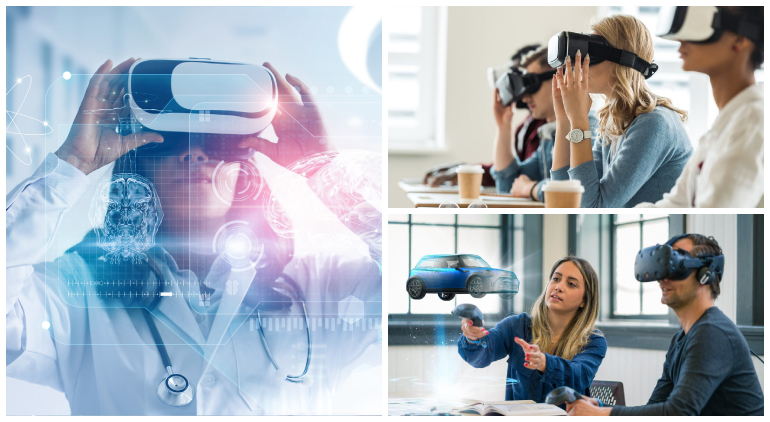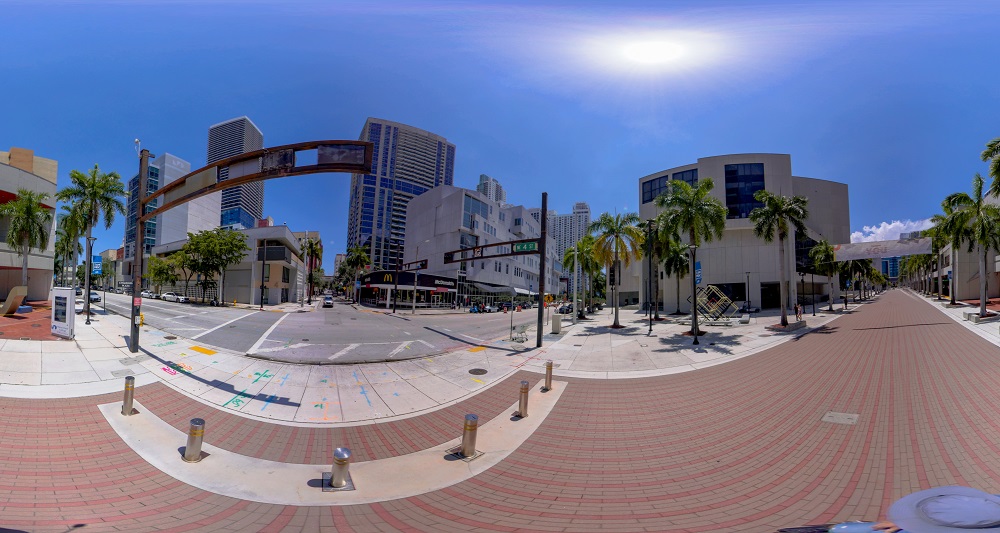Virtual Reality in Higher Education: Why College and Universities Should Opt for VR Labs

In the year 2018, statistics uncovered the total number of active Virtual Reality (VR) users at a whopping 171 million. 2019’s computer technology market i.e.
Virtual reality and augmented reality were expected to amount to a total of $16.8 billion. These numbers are more than enough to prove the rising popularity of AR and VR technology and its inevitable entrance into our daily lives.
While VR has been busy making its way into industries like retail, medicine, engineering, entertainment, and education, skeptics still raise concerns about whether or not VR is a necessity.
While on one hand, parents believe that VR can help improve their children’s education, statistics show a mere 22% of children use VR headsets for education.
But is VR a true help to the education system? Can Virtual reality in higher education bring about efficiency in kids?
We hope to find some answers and extinguish sceptics’ concerns for good.
1. Polishing Soft Skills
Walking into your university for the first time is always intimidating. The change of pace increased workload, and pressure to still have a social life is daunting enough to force you into a cupboard.
Universities using VR can help students get over some of their fears and simultaneously gain soft skills.
Such applications can also help college students prepare for job interviews. The application creates a simulation close enough, to what a real interview would be like and even goes as far as to assess your performance.
The scoring method resembles a form of gamification that subtly motivates students to keep practicing!
2. Virtual Tours

We have all spent hours on Google Maps on virtual tours of prospective colleges or universities. The idea of being able to decide between your options by weighing even the minutest of details makes you feel confident about your final decision.
However, a university that does not have a virtual tour, loses out on many prospective students.
Universities using VR can easily lure the students to their campus by setting up a decked-up version of the Google Maps version of virtual tours. Imagine if you could “go” to each of your options and pick apart the details bit by bit.
Princeton University has introduced a multilingual virtual tour, accommodating students from any part of the world, while Kent State has inaugurated a virtual walking tour!
Numerous universities have begun taking advantage of VR in higher education by luring students to apply to their college, which automatically gives them a boost in comparison to universities that are yet to release virtual tours.
Integrating virtual reality experiences into higher education not only enhances the recruitment process but also provides prospective students with immersive glimpses into campus life and academic facilities, creating a more engaging and realistic preview of their potential educational journey.
Incorporating virtual reality statistics further reinforces the growing impact of this technology on education, showcasing its effectiveness in attracting and engaging students in a technologically advanced learning environment.
"Join the VR revolution in higher education: Immerse yourself in dynamic virtual environments and pioneer the future of learning with innovation at your fingertips"
3. Experiencing Knowledge
According to the Cone of Learning (a concept found in “Audio-Visual Methods in Teaching”) developed by Edgar Dale in 1946, there are two types of learning: passive and active learning.
While passive learning refers to instances such as listening to a lecture or reading a textbook, active learning refers to seeing and hearing a video or physically doing an action. The latter, naturally, allows one to retain more information.
Using VR for higher education would automatically mean better retention due to the immersive nature of the technology itself. VR has the ability to translocate your mind elsewhere, as you sit idly on your bed but perform a dissection of a frog in a simulated reality.
Hence, through VR, one does not only learn and retain more information, but the rate at which this happens is far more than the rate at which information is learned and retained by college students today.
In simpler words, by experiencing knowledge, VR increases the efficiency of students exponentially.
Related Post : Shaping the Future of Higher Education Through Simulation Based Learning
 Get the App from Meta Store: Download Now
Get the App from Meta Store: Download Now
4. Training and STEM Education
STEM education (Science Technology Engineering Mathematics education) is an ever-growing field and all four disciplines help the process of development every day.
STEM education goes through updates and innovations very fast as well and requires innumerable resources to simply keep a lab functional. Maintaining laboratories for each discipline to cater to the STEM education of multiple students simultaneously, implies the requirement of diverse products, equipment, and apparatus.
All in all, maintaining laboratories are hard work but also, extremely expensive.
VR in higher education eliminates the requirement of scalpels for dissecting or electron microscopes for studying DNA structures. With VR, most of the costs of the laboratory apparatus can be reduced significantly.
VR, in fact, can meet all the requirements at a much affordable cost. You can practice performing surgery for vr medical training and practice chemical reactions without the possibility of harming yourself!
Virtual reality in higher education will lead to better education. With the pace at which these technologies are being used in all sorts of workplaces, it will not be long before everyone will have to adapt to this new technology.
However, embracing this computer technology that creates a simulated world is the best tactic.
Even though vr science education an easy-to-use technology, introducing it earlier into a person’s life (as early as college) can allow us to explore, what more it is that VR has to offer.
The limits to the world of VR are endless and mastering it will only come down to how fast we learn to master the skill and use it to our advantage.
So finally, can virtual reality in higher education bring about efficiency in kids? Yes, it can! And that is why colleges and universities should opt for virtual reality labs!




